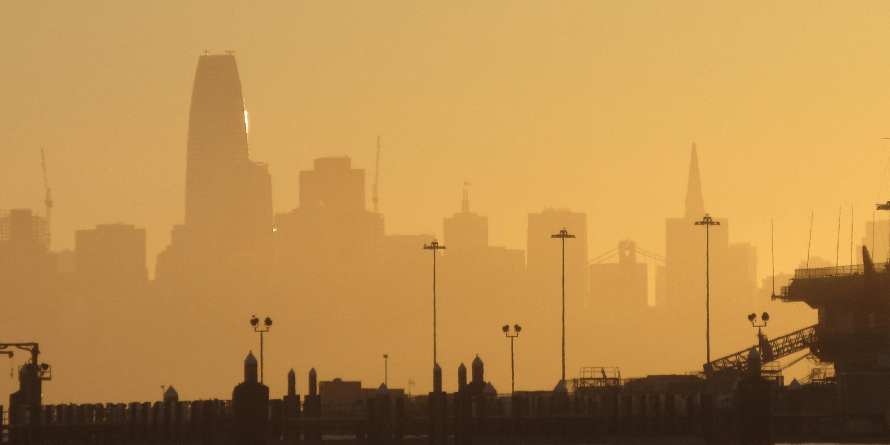
For Air Quality Awareness Week, May 2-6, AC Library is partnering with the Bay Area Air Quality Management District and the Bay Air Center to support air quality education for residents of Alameda County. This year’s theme is Be Air Aware & Prepared!
The impacts of poor air quality on health can be a hard topic to wrap your head around. For one, those impacts are often invisible. Poor air quality affects people differently, and can take years to have a noticeable effect. The Air Quality Index (AQI), seems simple enough: a scale from 0 to 500. The 0 represents clear air and 500 indicates a serious hazard for anyone. Behind the numbers, however, sits a range of air pollutants, from different sources – some natural, and some from human activity.
If you have lived in the Bay Area for any length of time, you’ve probably noticed how much air quality is impacted by wildfires—which have increased in both size and frequency due to drought, land-and-water resource management, and climate change. One of my most vivid memories is the 1991 Oakland Firestorm. The day before the hills burned, I was at Lake Temescal with my elementary school class. I watched a series of helicopters dip huge containers into the lake to douse the fire until it was out. The next day, rekindled and swept by winds, the flames returned. This time, my whole neighborhood watched as flames moved quickly down the hills towards us. My home was not impacted by the fire, but many were. It was easy to see the scars on the hillside—the destruction and loss from the fire. It was much harder to understand the long-term damage caused by the smoke. Those hidden impacts show up years later, sometimes in the form of chronic heart or lung disease.
More and more, we are seeing that air quality is also a daily concern. Commuting, our built environment, and industry contribute to the quality of the air we breathe. Also, the placement of highways, industry, and green spaces has created inequitable health burdens for low-income communities in the East Bay. A 70-year truck ban on a portion of Highway 580 has allowed the East Bay hills to benefit from cleaner air at the expense of the flats along Highway 880. Thanks to easy access to shipping, the 880 corridor also hosts industrial pollution sources, such as recently closed AB&I Foundry in East Oakland and the Tesla factory in Fremont. These factors contribute to higher rates of lung disease, such as chronic asthma, seen in communities along the highway.
Over the last decade, as wildfires in California have become more frequent and more intense, checking websites like AirNow and PurpleAir has become as routine for some as checking the local weather report. Unfortunately, just checking the AQI isn’t enough. Many older homes and businesses lack the modern windows and air handlers to maintain healthy indoor air quality. Wildfire smoke brings residents streaming into our libraries. Our buildings become cleaner air centers, serve as distribution points for N95 masks, and help people find resources to protect themselves and their families.
This year, we want to help residents Be Air Aware & Prepared before fire season arrives. When you next visit, keep an eye out for our air pollution displays – they’re full of information about the sources of air pollution, steps you can take to reduce pollution in your community, and ways to protect your health.
To go deeper, check out the links from the Bay Area Air Quality Management District, or visit Gale in Context: Environmental Studies where you can find thousands of articles, videos, audio, reference materials about air pollution and other environmental topics. Also, remember to visit our eLibrary to discover the wide variety of other resources available to our members.


Add a comment to: Air Quality Awareness Week